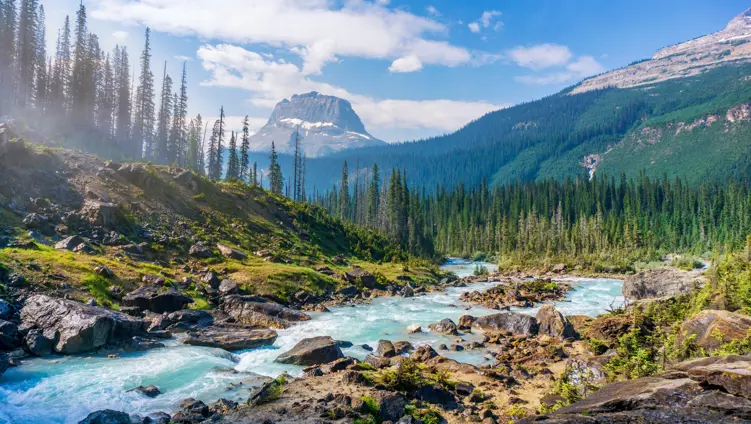Searching for a water-based journey to complete her long-distance triathlon, but unwilling to hoist a kayak past her neighbour's balcony every morning, Annie Voigt stumbled across the emerging world of swimpacking.

Searching for a water-based journey to complete her long-distance triathlon, but unwilling to hoist a kayak past her neighbour's balcony every morning, Annie Voigt stumbled across the emerging world of swimpacking.
“Swimpacking is the logical next step, no?" I ask a wide-eyed woman who had made the mistake of asking me what I do in my spare time. "First I went bikepacking to the Nordkapp, then fastpacking across Germany. And now - swimpacking.”
She blinks. “I just keep wondering where the word ‘logical’ will come in,” she says.
“When you see it as a multi-year, trans-European triathlon, it makes total sense,” I chirp.
“... But why would I? Why would anyone?!”
Annie enjoying the water - Annie Voigt

She was right, of course. At the beginning of the year I would have responded exactly the same way. I didn’t have a clue what fastpacking was. All I had was an idea.
I wanted to find a way to finish what I called my Trans-European Triathlon. This had begun, very spontaneously, with a bike ride from Berlin to Nordkapp. The attempt to cycle almost 3,000 km on my own as my first solo, long-distance adventure did not come without tribulations. But somehow I managed to drag myself and my bike Red up into the Arctic, where I wildcamped in lonely birch forests and on the moss of the Scandinavian tundra. I fell in love with long-distance adventures. And I swore I’d do it again.
But then Covid struck. Borders once unimaginable closed became seemingly impenetrable barriers.
So I adjusted my long-distance adventure plans and, like most people in the early stages of the pandemic, went for runs. Lots of them. I ran so much that one day, the idea to run instead of cycle across Germany no longer seemed like a bad idea, but a great one. This eventually led to my first ultramarathon: 1,000 km, self-supported and solo, from the lowest to the highest point of Germany - all in the midst of the pandemic.
Annie in the water - Annie Voigt
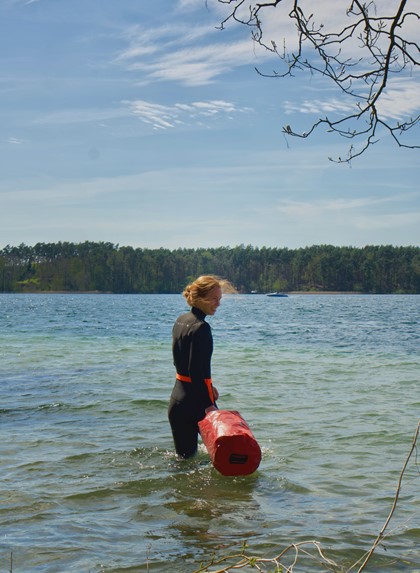
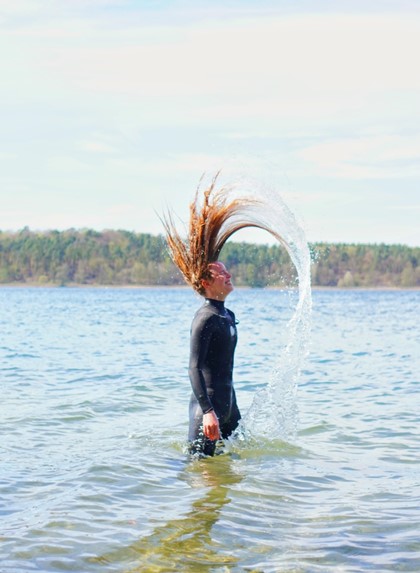
This left the water leg of my Trans-European-which-kinda-got-stuck-in-Germany-because-of-Covid triathlon. I knew a desire for another expedition would accompany the end of the pandemic, so I began scheming.
I began looking into kayaks, before realising I lived on the fourth floor of a tiny apartment building. There was no way I was constructing a pulley system to slowly raise a kayak past my neighbours' balconies every second morning.
Left with what seemed like no other option, I started researching long-distance swimming. But this turned out to be harder than anticipated. Running, and ultrarunning especially, are booming, with a new book being published on the topic every week (seemingly every new runner has been inspired by Chris McDougall’s Born to Run). But swimming is a smaller pool to dive into.
I began my research as I always do: by heading into my favourite local bookstore. Here I discovered Lynn Cox’s Swimming to Antarctica. Her journey to becoming one of the world’s most accomplished channel swimmers began with a 32.2 km open-water swim from Catalina Island to Seal Beach in Los Angeles. From there she levelled up, swimming the Cook Strait (Te Moana-o-Raukawa, in Māori) between New Zealand’s North Island (Te Ika-a-Māui) and South Island (Te Waipounamu); the Strait of Magellan, separating southern Chile and Tierra del Fuego; and eventually the Bering Strait, between Alaska and Russia, swimming 4.3 km in 5.5°C water, dressed in nothing more than a bathing suit, swim cap and goggles.
Mind-bogglingly impressive, but not quite what I had in mind. While Lynn Cox has mastered the art of swimming from one beach to another in one freezing, choppy, shark-infested heave, I prefer my distances in chunks I can nibble on and digest over multiple days.
I needed a “staged swim.” But since staged swims require a night outside of the water, I would need to bring camping gear. And how do you swim while lugging your sleeping bag, food, tent and water? I would have to convince a friend to accompany me with my gear in a kayak and let go of the idea of doing this stage solo and self-supported.
'While Lynn Cox has mastered the art of swimming from one beach to another in one freezing, choppy, shark-infested heave, I prefer my distances in chunks I can nibble on and digest over multiple days.'
“Why don’t you ask Jonas Deichmann for help?” suggested Vedangi Kulkarni, the youngest woman to have cycled the world, at a talk on adventure logistics I had joined to see if anybody knew how to pull off a swimming expedition. “He’s currently attempting a triathlon around the world, and swam around 450 km during it!”
I investigated this mysterious long-distance-swimming master, and there it was: the solution to my problem. Swimpacking.
Swimpacking - or swimcamping, as it's known according to the school of thought inspired by another pioneer of the sport, Sean Conway - fits snugly next to its "packing" siblings. All involve packing your camping gear into a bike bag or backpack, strapping it on and setting forth. In this case, into the water.
Before Jonas Deichmann came along, Sean Conway held the record for the world’s longest triathlon after cycling, running and swimming the length of Britain in 2015. The swimming leg saw him swim 200 km over two weeks. Pictures show him tugging a small, red raft to carry his gear: one of the first swimpacking rafts.
In an attempt to figure out swimpackers’ specific gear needs, I stumbled across a small, vibrant community of swimpackers through Colin Macleod’s Instagram. Macleod started swimcamping in 2019, and has created several helpful videos to guide beginners through the essential process of strapping their gear onto a watertight raft.
It took me several tests to get everything I needed for camping into a single bag, but eventually I found a system that worked. And off I went.
Annie's swimpacking kit - Annie Voigt
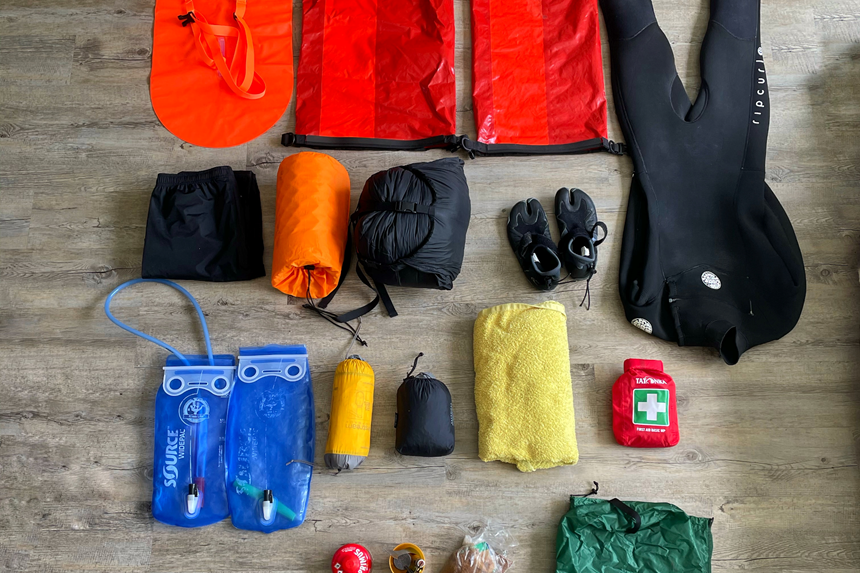
I started by swimming a simple 300m in open water, building up to 1 km along the shoreline. Eventually, I braved the deepest segment of my training lake, swimming 2 km in total. Then I accumulated 5 km in the Baltic Sea – without my wetsuit.
I began my excursions terrified of the plants I could never see but too often feel, thinking they would grab my wrists and pull me down. While I was pretty sure the giant catfish roaming the bottom of Berlin’s lakes didn’t really care much about me treading water above them, I never knew for sure. This is the challenge with water: the lack of visibility creates uncertainty. Gradually I have learned to stay calm. Now it isn’t cormorants popping up from the depths scaring the living daylights out of me; it is me, suddenly popping right up next to their nest, startling the birds that had previously seemed to chuckle at my antics.
As the sunsets got earlier, but my working hours stayed the same, I saw a picture on Instagram: someone had put a light into their small buddy buoy, illuminating it like a magma bubble. I went home from work that day, covered the windows and dropped a headlamp into my RuckRaft bag. It lit up like a magma bubble. Perfect.
Since it was too late for a pre-dusk swim, I figured there was no better moment to test my theory that night swimpacking is a great idea.
Annie getting to grips with her raft - Annie Voigt
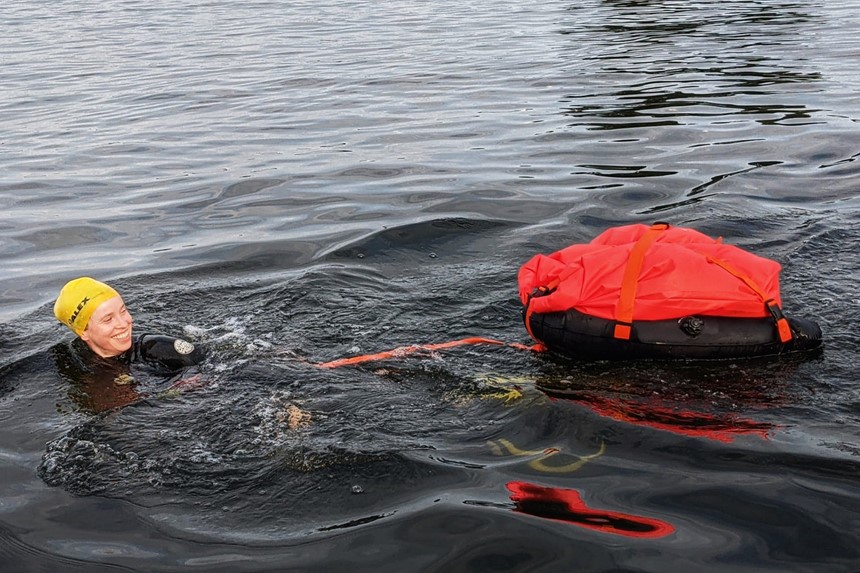
Standing by the shoreline in the dark, looking in the direction of my target island, hidden in the blackness, I started to doubt that verdict. The water looked choppy - but it was hard to tell in the moonlight. I strapped my gear onto my RuckRaft, feeling like a Navy Seal preparing for a mission, and waded into the water, my headlamp illuminating a square meter of black water ahead of me.
I tried to calm my nerves by focusing not just on current conditions, but also my experience: I knew the section and the quickest exits from the water. And I would be wearing a headlamp to light the way. But in the dark, it felt like I'd jumped into the waters of another planet.
The RuckRaft tied to my waist sat unnervingly low in the water, its rear almost entirely submersed. Inching my way towards the island, I realised that the waves were much, much higher than they had seemed from the shore - high enough to repeatedly slap me in the face.
Halfway between island and beach, I took a moment to consider my situation. A few boats were moored to the island’s shoreline ahead, their parking lights bobbing up and down in the waves. No matter which direction I went, it would be the same distance. "No way to go but forward."
'But in the dark, it felt like I'd jumped into the waters of another planet.'
I tried to kick my legs harder, while simultaneously trying hard to keep them relaxed. A cramp would have been the absolute worst-case scenario. Eventually, finally, my hands plunged into the inky black and stroked at sand. The wind nipped at my skin as I clawed my way from the water, out of my wetsuit and back into dry clothes.
“That was one of the most terrifying things I've ever done,” I remember thinking, looking out at the moonshine reflecting on the obsidian surface of the wind-whipped water.
It is one of many moments through which swimpacking has taught me more about mental strength and staying calm under pressure than even ultramarathons or long-distance cycling.
The Elbe - Annie Voigt
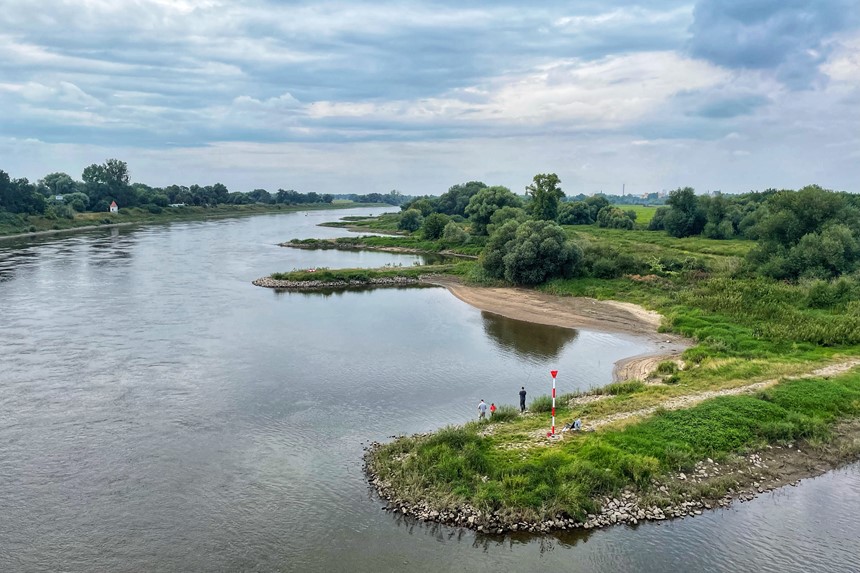
I have since started swimming in bigger lakes, then streams and rivers. I have tested my gear in currents and in windy conditions. I have camped on islands inhabited only by swans and ducks. Once I found myself on an island with nothing to wear but a sweater, as all my other clothes had gotten absolutely drenched. Here I learned the first rule of swimpacking: always pack your important gear into an extra drybag. After a cold night in my wet clothes, I waved good morning to people living on houseboats anchored by the beach. “Where’s your boat?” one of them asked. “I don’t have one!” I replied as I waded off into the water, my raft floating behind me.
Few things compare to the beauty of an open-water swim in the setting sun, the intensity of the changing colours of the sky reflecting on its surface, blue to pink to orange, painting it like liquid cotton candy. But even as you take in the beauty, never underestimate the distance back to the shore.
Annie enjoying the shoreline - Annie Voigt

The world is a giant place. And we have travelled much of it, sending explorers out to chart mountains, prairies, deserts, forests, jungles and more. But swimpacking gives exploration a new twist: a swimmer is completely immersed in the route she swims.
“It’s probably the slowest form of transportation anyone could choose,” wrote a swimpacker in a Facebook community I found early in my research, “so we don’t do it out of practical necessity. It’s all about the way you are exposed to, immersed in and a part of nature. In the water, you have the whole wide world to yourself. Alone with your thoughts, the bubbles and a few seals for hours on end... It’s the best.”
There’s no need for diesel to power your boat in order to explore water. There’s no need to purchase or borrow a new kayak or canoe, or use your car to transport these large vehicles to the next lake. If you want, you can run or cycle there. Swimpacking is especially carbon-neutral, even compared with other human-powered adventures. “I like the way people approach it in different ways and often use re-purposed or homemade stuff,” another community member wrote. “Really you just need a good drybag!”
I’ve completed nearly a year of these small adventures as I prepare for my big swimpacking expedition – the end to my Trans-European Triathlon. My plan is to swim a 550 km section of the river I was born along. The Elbe snakes its way through Germany from the mountains of the Czech Republic, and has always had a special place in my heart. My swim won’t break any records*, but it doesn’t have to.
I want to explore the river I was born and have cycled and lived along in a more intimate way than I ever could on dry land. And I know swimpacking is going to get me there. Where could swimpacking take you?


